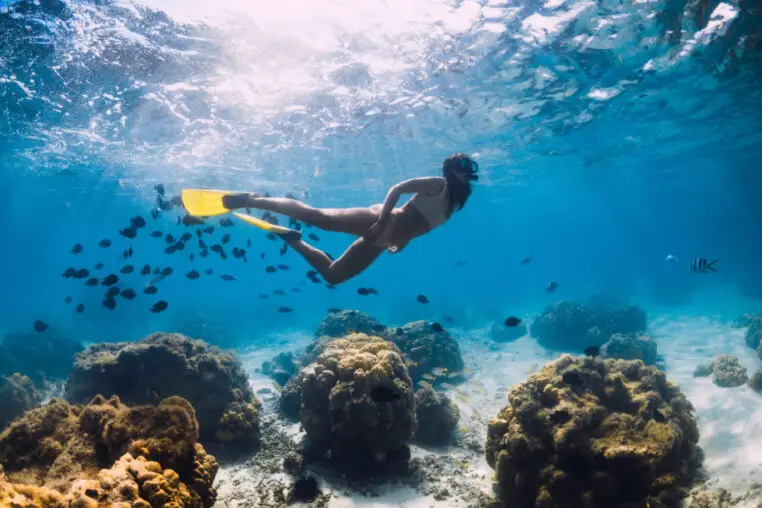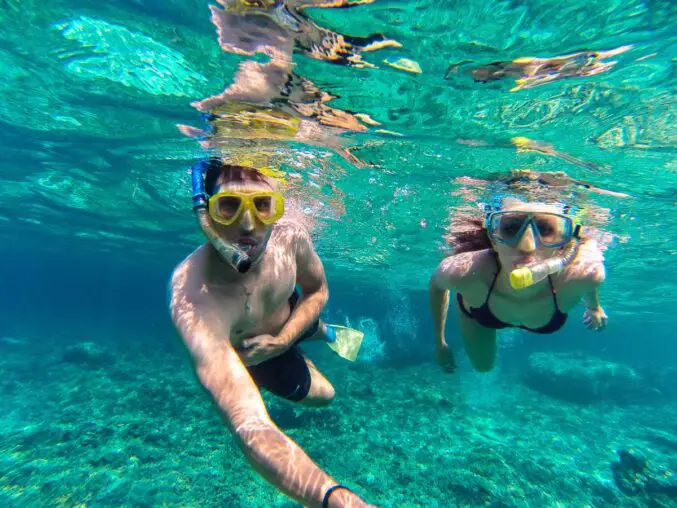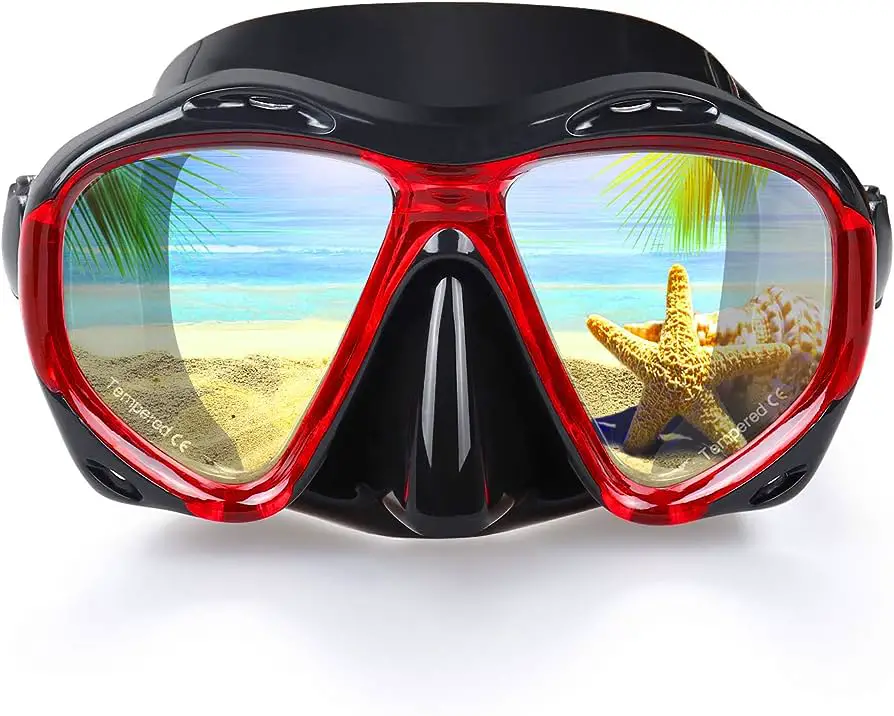
For those embarking on their snorkeling journey, the sight of a snorkel mask instead of conventional swimming goggles can be quite a revelation. What’s more surprising is the mask’s substantial size, largely attributed to its nose pocket.
You might be wondering why a snorkel mask covers your nose. Is it a design flaw or a deliberate choice? Some may even have concerns about feeling confined or how it impacts their breathing experience. The truth is that there are various reasons behind this design, encompassing elements of safety, comfort, and functionality.
This article explores the rationale behind this design decision, delving into each aspect in depth while addressing common queries regarding snorkel masks and their nose pockets.
Benefits of Nose Pockets in Snorkel Masks
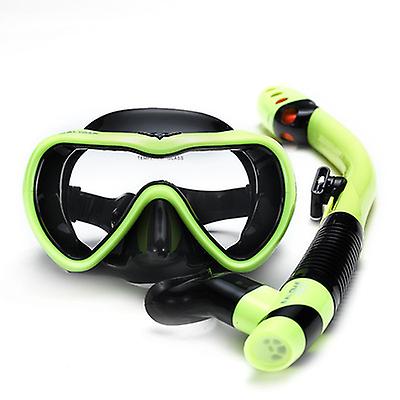
Facilitating Equalization
Equalization is the process of maintaining a balance between the pressure inside your mask and sinuses and the increasing water pressure as you dive deeper. As you descend underwater, the mounting pressure can create a vacuum effect within your mask and ears, potentially causing discomfort or even harm to your eyes, ears, and sinuses if not equalized correctly.
Snorkel masks featuring a nose pocket provide wearers with the ability to pinch their nostrils and gently blow against them—a technique known as the Valsalva maneuver. This action introduces air into the Eustachian tubes and middle ear, assisting in equalizing internal pressure with external water pressure.
For individuals engaged in freediving or those venturing to greater depths, regular equalization is essential to avoid potential ear damage. Along similar lines, maintaining proper pressure inside the mask is crucial to prevent eye injury.
To prevent the mask from tightening around your eye sockets, simply exhale through your nose (without pinching it), allowing the pressure inside the snorkel mask to equalize. If there’s a single reason why snorkel masks have nose pockets, it’s to make the process of equalizing mask and ear pressure more convenient.
Shielding Against Water Inhalation
A fundamental role of any snorkeling or diving mask is to offer a clear underwater view while keeping water away from the eyes and nose. When the nose is covered by the mask, an additional barrier is created to prevent unintentional inhalation or aspiration of water.
Even small amounts of inhaled water can lead to coughing, choking, and in severe cases, a condition known as “dry drowning,” where irritation in the lungs triggers excessive fluid production.
By ensuring that users solely breathe through their mouths, masks equipped with nose pockets significantly diminish the risk of these potential hazards.
Encouraging a Natural Breathing Experience
For many individuals, especially beginners, breathing exclusively through the mouth may feel unnatural and restricting. Full-face snorkel masks, which encompass both the mouth and nose, provide an innovative solution to this issue.
These masks enable users to breathe in a more familiar and natural manner, utilizing both their nose and mouth. This design contributes to a more comfortable and enjoyable snorkeling experience, reducing potential apprehension or discomfort associated with adapting to mouth-only breathing.
Even within traditional snorkel masks, having a nose pocket prevents inadvertent water inhalation for those not yet accustomed to exclusively breathing through the mouth while snorkeling.
Ensuring an Effective Seal
An effective seal is paramount for any snorkel mask. It guarantees that water remains outside, affording a clear vision and a comfortable experience. By integrating the nose into its design, the mask can establish a snug fit around both the nose and cheeks. This design enhances the mask’s sealing capabilities.
The natural contours around the nose and cheeks offer anchoring points for the mask, minimizing the chances of water intrusion. Furthermore, masks designed this way distribute pressure more evenly, ensuring that the mask remains securely in place, even during user movement or turbulent water conditions.
Minimizing Lens Fogging
Anyone who has worn glasses on a chilly day and experienced fogging understands the challenge of maintaining a clear view within a mask. Fogging arises when warm air (such as our breath) contacts a colder surface (like the mask lens), resulting in condensation and the formation of tiny water droplets that obstruct vision.
Covering the nose in a snorkel mask aids in redirecting warm breath away from the lens, reducing direct contact. Additionally, many masks incorporate a one-way valve system that efficiently expels exhaled, moisture-laden air from the mask.
By controlling and directing the flow of breath, masks with nose pockets mitigate the risk of condensation and consequent fogging, ensuring that snorkelers maintain an unobstructed view of the underwater environment.
Protection from Irritants
The underwater realm is replete with marvels, yet it also harbors minute particles, microorganisms, and potential irritants. Exposing nostrils directly to the water renders them susceptible to these irritants.
A mask that encompasses the nose acts as a barrier, preventing these potential irritants from infiltrating the nostrils and causing discomfort or infections. This design guarantees that snorkelers can relish their underwater explorations without fretting over unforeseen annoyances or health issues.
Warding Off CO2 Buildup
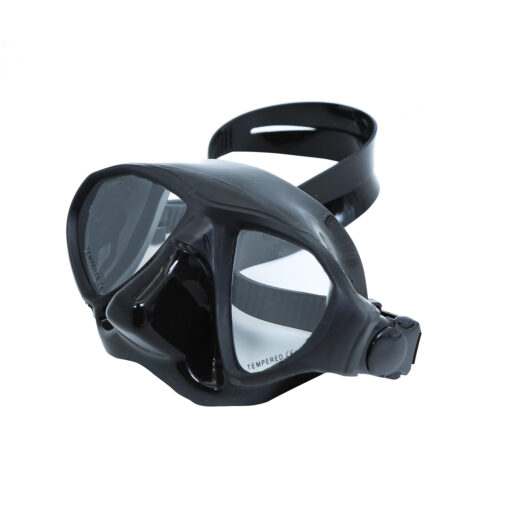
Carbon dioxide (CO2) is a natural byproduct of our respiratory process. Exhalation releases CO2. In the confines of a snorkel mask, it is vital to avert the accumulation of high CO2 levels, as inhaling concentrated CO2 can lead to dizziness, headaches, and, in severe instances, unconsciousness.
Full-face snorkel masks, which envelop the nose, often feature separate chambers for inhalation and exhalation. This configuration ensures a constant supply of fresh air for inhalation while effectively expelling CO2-rich exhaled air from the mask. By diminishing CO2 buildup, these masks prioritize user safety and well-being.
Reinforcing Mask Structure
The structure and design of a snorkel mask play a pivotal role in its functionality and durability. Incorporating the nose into the mask’s design not only confers user benefits but also bolsters the mask’s structural integrity.
This integration guarantees that the mask retains its shape and offers a consistent fit, even under varying water pressures. The robust structure further diminishes the chances of the mask slipping or becoming distorted during use, ensuring a more dependable and consistent underwater experience.
Enhancing Comfort
Comfort assumes paramount importance when wearing gear for an extended duration. The nose, positioned centrally and prominently on our face, is sensitive to pressure and friction. By incorporating the nose within the mask and furnishing it with padding or cushioning, the mask delivers an elevated level of comfort.
This design ensures there’s no undue pressure, pinching, or chafing around the nose area, making the snorkeling experience more enjoyable. Users can focus on the beauty of the underwater world without being distracted by potential discomfort.
Aesthetic Appeal
While functionality and safety take precedence, aesthetics also factor into the design and selection of snorkel masks. Masks that encompass the nose provide a streamlined and sleek appearance, often resembling professional diving gear.
This design can be more visually appealing to many users who prefer the cohesive look of a mask that covers the entire face as opposed to one that exposes the nose. Although aesthetic appeal is a secondary benefit, it contributes to the overall snorkeling experience, with users feeling more confident and stylish in their gear.
Frequently Asked Questions
Can I still breathe naturally with my nose covered in a snorkel mask?
Yes, when wearing a traditional snorkel mask with a nose pocket, you can still breathe naturally through your mouth. The nose pocket ensures that the nose is isolated from direct water exposure, but it doesn’t typically facilitate actual breathing through the nose. Instead, you breathe through the snorkel using your mouth.
Covering the nose provides benefits like equalization and prevents water inhalation through the nose. For those who prefer nose breathing, full-face masks can be considered, but the standard mask design focuses on mouth breathing.
Are there any downsides to having a snorkel mask that covers the nose?
While traditional snorkel masks with nose pockets offer numerous advantages, there are some potential downsides to consider:
- Potential Discomfort: Depending on the fit, some users may find that the nose pocket exerts pressure or causes chafing against the nose over extended periods.
- Mask Fogging: Exhaled air from the mouth can sometimes rise, leading to the potential for mask fogging, especially if it’s not treated with a defogging solution.
- Bulkiness: Traditional masks with nose pockets can be slightly bulkier compared to simpler swim-goggle style designs.
Are there people for whom a mask that covers the nose isn’t suitable?
Yes, while traditional snorkel masks with nose pockets are versatile, they may not be suitable for everyone:
- Individuals with Specific Facial Structures: Proper fit is crucial for any mask. People with unique facial structures might not achieve a comfortable seal with all mask designs.
- Those Seeking a Natural Breathing Experience: Individuals who prefer to breathe through both their nose and mouth might find the traditional mask design restrictive. In such cases, they might opt for a full-face mask.
- Experienced Divers with Specialized Needs: Experienced divers with specific requirements or preferences based on their experiences might prefer specialized masks without a nose pocket.
How do I clean and maintain the nose section of my snorkel mask to ensure longevity?
To ensure the longevity of a traditional snorkel mask with a nose pocket, follow these guidelines:
- Rinse After Each Use: Always rinse your mask in fresh water after each use to remove salt, chlorine, or other potential contaminants.
- Use Mild Soap: Periodically, clean the mask using a mild soap to eliminate residues or facial oils. Thoroughly rinse off any soap afterward.
- Avoid Harsh Chemicals: Refrain from using strong chemicals or solvents, as they can degrade the mask’s materials.
- Dry in Shade: After cleaning, allow the mask to air dry in a shaded area. Direct sunlight can weaken the materials over time.
- Store Properly: Store the mask in a cool, dry place, and use a protective case if available to prevent dust and potential damage.
- Inspect Regularly: Periodically check the mask, especially the seals around the nose pocket, for signs of wear or damage. Replace any worn-out parts as necessary.
- Manage Fogging: Use defogging solutions or a small amount of baby shampoo on the inside of the lens to prevent fogging. Apply a thin layer, rinse slightly, and you’re ready for a clear snorkeling session.
By adhering to these care instructions, you can ensure the longevity and optimal performance of your snorkel mask, guaranteeing countless enjoyable underwater adventures.



